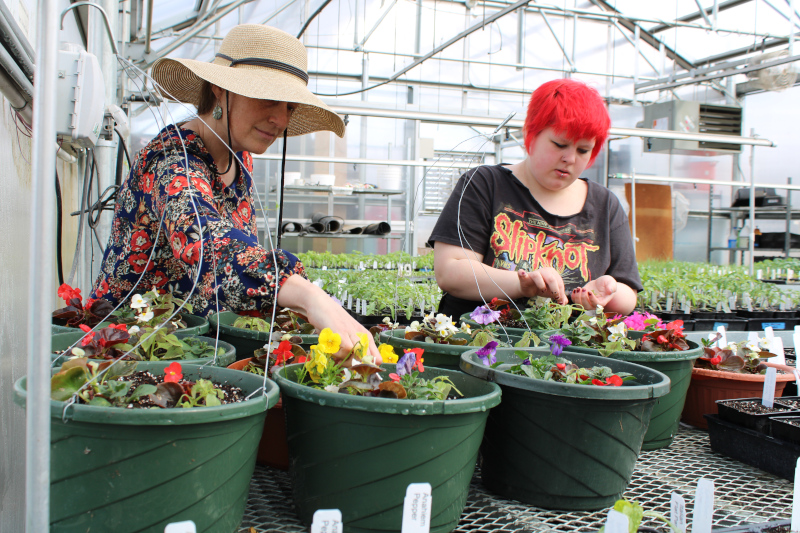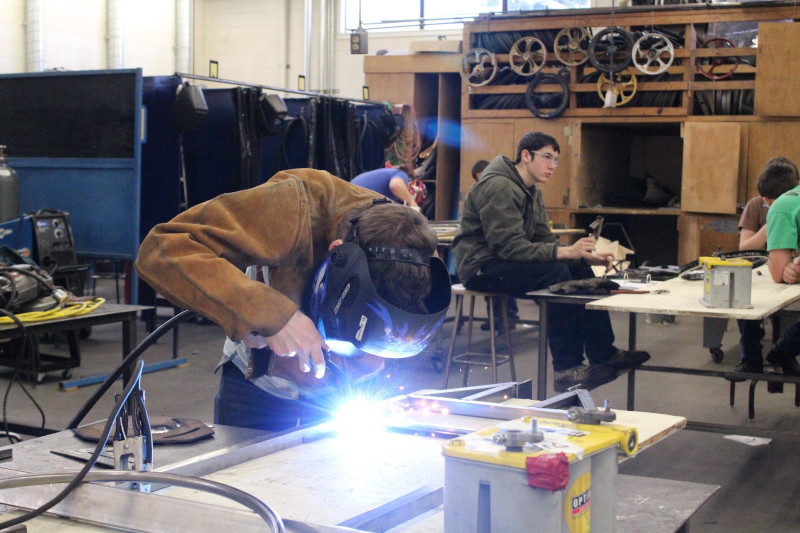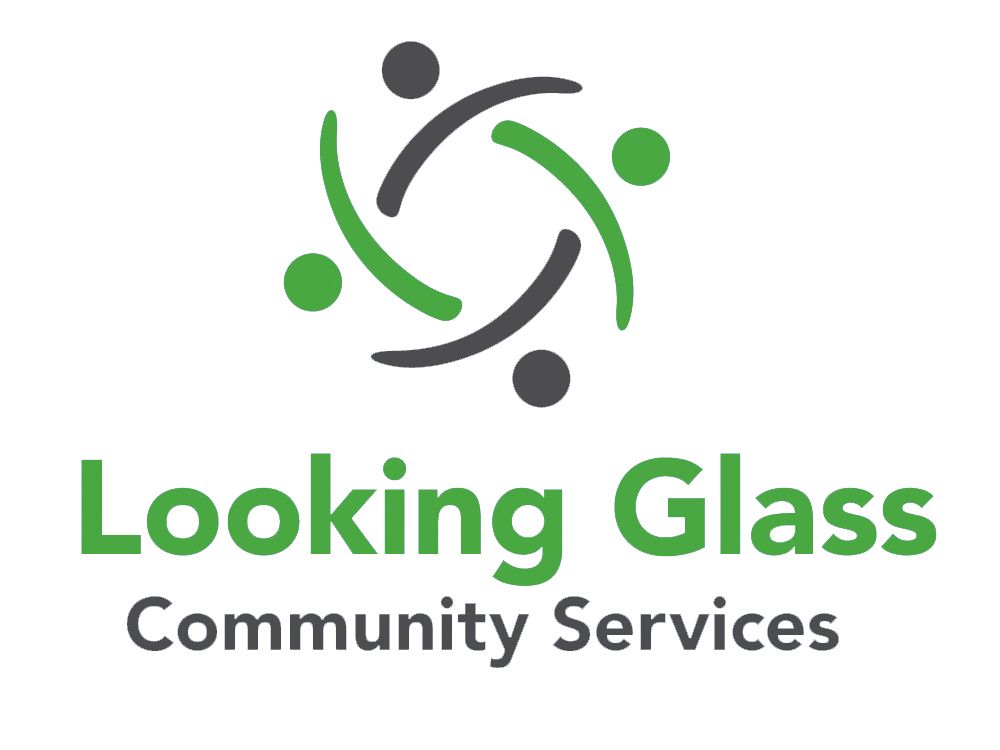Bethel School District
Top of the Class
Promoting Relevance, Responsiveness, and Joy in Education
In Lane County, Oregon, Bethel School District holds innovation and community engagement near to its heart. Recently, this forward-thinking district has embarked on a journey to redefine what it means to provide a holistic and impactful education, culminating in the creation of the Bethel Blueprint, a plan that not only reflects its current identity but also charts a path for the future.
Dr. Kraig Sproles, Superintendent, shares, “This has resulted in a new mission statement for the district -In Bethel, we want to create relevant, responsive, and joyful learning communities where all of our students thrive.”
Early Learning Initiatives
The work starts early in the district, where community partners offer programs for the littlest learners, including Head Start, and Preschool Promise. Bethel School District also offers its preschool program, Little Wolverines. “That was created as a place on campus for students who were having children as they were navigating high school.” Sproles expands. “It’s morphed into this larger preschool and early learning opportunity for our students. Now, it’s a Career and Technical Education avenue for our students who are interested in possibly becoming teachers.” It also fills a gap for families who don’t qualify for income-dependent programs, but still struggle to afford high-quality preschool options. “That’s where we’ve seen our Little Wolverines program expand and thrive,” Sproles remarks. To prepare children to enter Kindergarten, Bethel Schools offers a summer school option called Kids in Transition to School. Sproles explains. “It is like a little kinder boot camp for a few weeks to get them ready to go, so they can orient themselves as learners.”

Building for the Future
Ashley Espinoza, Bethel School District Board Member and Executive Director of the Lane Workforce Partnership, highlights the synergy between the district and its partners. “What’s interesting about our community is that we do collaborate well, and I think we understand the idea of collective impact,” she says. “For example, there’s a program called Constructing a Brighter Future, where all 16 school districts in Lane County are building tiny homes that are being placed in safe sleep sites for the unhoused. So, not only are students getting access to employability skills and technical skills around the trades, but they’re also doing the community good.”
These homes are constructed at a location known as “The Hope Factory,” a refurbished industrial warehouse in the community. Initially launched to support wildfire victims and address affordable housing shortages, this project allows students to gain hands-on experience. Espinoza conveys, “Saint Vincent de Paul and other partners like the Oregon Community Foundation were awarded funding to be able to build manufactured homes. So, at the factory, there is a classroom that was built in there so that we can have students come through and get to work with the professionals. They get to from start to finish to see what that looks like.” This not only provides valuable work experience, but it allows students to try out various areas of specialization for the future.
In addition, Bethel School District has decided to establish its own tiny home manufacturing center at Kalapuya High School. “Kalapuya offers a lot of hands-on experiences for students,” Sproles details. “We’re just in the process of completing a design and build program where students will be able to design a tiny home using computer technology and working with a local architectural firm. They’ll design some homes and then they’ll have the opportunity to build those on site as model homes for the community.” This initiative benefits students, as well as fosters strong partnerships with organizations like Homes for Good and other community entities. Espinoza says the success of these construction programs has sparked interest in expanding the model to other industries, such as manufacturing and healthcare.
Workforce Pathways
Bethel School District is creating pathways to a variety of careers through strong community ties, such as the newly formed partnership with the Eugene Springfield Fire Department. Through this collaboration, high school students are introduced to firefighting, paramedic, and EMT training. Sproles recounts, “In the fall, our students will take classes at Willamette High School, which will culminate in several different weekends of training at the fire school. At the end of that time, if they’re old enough, they could test for their EMT licensure. We’re doing a very similar thing now with the Eugene Police Department using that same idea, and then looking to get into healthcare as well with Peace Health.” He emphasizes that although these programs are available to all students, the goal is to expand access to those fields, particularly for females and people of color.
Willamette High School offers 13 accredited career education pathways, which include digital photography, computer information technologies, culinary arts, and automotive programs. Dan Hedberg, Principal at the high school relays, “We have a pretty tight working relationship with Lane Community College, as those programs are accredited through the schools. So, students are getting access to industry caliber technology with accreditation so they can earn college credits to get them on the path towards credentials in those fields.” He says the district has a long history of investing in CTE pathways, evolving them over the past 15 years to meet industry trends.
Community Engagement
Communication Director, Alisha Dodds talks about the district’s approach to communication and outreach. “We’re a slightly different school district than others in our area, we’re a little bit smaller. In the daily communications and a lot of the more targeted conversations that we’re having with families, most of our focus is on direct communication,” she emphasizes. This includes utilizing efforts like district translators at events, to foster connections and promote inclusive community involvement. Regarding marketing, she says families are reached through radio, television, and social media, to highlight significant achievements such as high graduation rates or initiatives like the Sources of Strength mental health and suicide prevention program.

(Paragraph break)
Hedberg underscores Bethel School District’s efforts to be more responsive and relevant to its community. “Throughout the last couple of years, we have been intentional about focusing on who we want to become and how we best serve our students,” he states. “One way we measure that is through graduation rates. This year, our district-wide graduation rate was at 81%. For a frame of reference, that would compare to the year 2009 at 62%.” Hedberg discusses the importance of foundational skills, emphasizing the district’s commitment to early literacy and the development of perseverance, responsibility, and kindness from elementary through high school. One recent initiative is the Bethel Profile of a Learner, which involved engaging community partners, families, students, and staff members to explore the district’s identity and future direction.
With today’s kindergarteners set to graduate in 2036, the district is envisioning what it means to be prepared with the skills required for tomorrow’s jobs. While technology will undoubtedly change, Hedberg says the focus is currently on cultivating perseverance, responsibility, and kindness in students . The application of these skills expand and adapt as students progress through their schooling experiences. “When we talk to our industry partners they say when students graduate and are ready to come to the workforce, they need people that are problem solvers, and that are creative and innovative. Those are all within the higher order skills of perseverance,” he asserts.
Looking Ahead
Like many school districts in Oregon, Bethel School District has experienced a decline in enrollment, exacerbated by the pandemic and prolonged school closures. This trend has had financial implications since school funding is based on student enrollment. “We’ve had to think deeply about what we value,” Sproles admits. “It’s easy to invest in things when you have extra dollars. When you’re in a restricted funding climate and you have declining enrollment and declining revenue, it shows clear what you truly value.” Bethel has chosen to focus on its commitment to CTE and student success. Sproles asserts, “We are committed to having multiple pathways for students to demonstrate their brilliance.”
He notes the value of preparing students for four-year universities while recognizing the importance of other paths. “We’re creating people who are going to navigate this complex world with flexibility, with a lot of compassion, with a lot of kindness and a lot of creativity,” he portrays. “So, we are making that switch from having students be content-driven, to thinking more holistically about how we are creating people who can navigate this complex world, and we’re doing it at a time when we have reduced revenue.”
As Bethel School District moves forward, the Bethel Blueprint will continue to serve as a guiding framework for achieving its mission. In the words of Superintendent Sproles, “Our focus is the same, and that’s this idea of becoming relevant, responsive, and joyful and living into that mission. We need to create multiple ways for kids to thrive, multiple ways for them to show us what they know and prepare them for the future.”
AT A GLANCE
Bethel School District
What: A leading K-12 school district
Where: Lane County, Oregon
Website: www.bethel.k12.or.us
PREFERRED VENDORS
Looking Glass Community Services – www.lookingglass.us
Looking Glass Community Services’ mission is to build a better future for children, youth, adults, and families and we’ve been serving Lane County, Oregon since 1970. Our programs span the diverse fields of behavioral health, mental health and addictions treatment, psychiatric residential treatment, education, homeless youth services (outreach, basic needs, shelter, housing), and workforce readiness.




